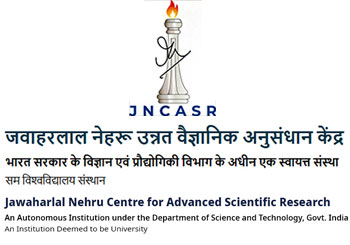HIV-AIDS Laboratory Research Highlights
1. Attenuated neurovirulence of HIV-1C: Our laboratory came into existence with this the single most influential publication in 2004, which demonstrated low neuro-virulence of HIV-1C for the first time (Ranga U et al. Journal of Virology, PMID: 14963162).
In collaboration with NIMHANS, we proposed that HIV-1C Tat protein is a defective monocyte chemokine ineffective in recruiting activated monocytes to the brain. We proposed that the defective nature of C-Tat possibly underlies the reported low incidence of HIV-1 dementia in India and probably in other infections dominated by this family. This publication, the first to correlate the viral subtype-associated differences to differential clinical manifestation, has been widely appreciated. With this publication, we claim to have initiated a subarea of research in HIV pathogenesis, which is HIV-1 genetic variation centric. Based on our work, NIH, USA, made it mandatory to examine genetic differences of HIV subtypes while interrogating neuropathogenesis. Several laboratories in India and abroad have taken a cue from our publication investigating subtype differences. Thus, our work has brought HIV-1C and subtype-associated differences into the limelight.
2. Molecular characterization of HIV-1 evolution in India: We identified two different hotspots in the genome of HIV-1C - one in the LTR, the viral promoter, and the other in Gag, a structural protein. We showed that both variations confer a replication advantage on the virus.
HIV-1C demonstrates an uncanny molecular ability to duplicate existing sequence motifs in the viral genome to gain replication fitness advantage. The sequence duplication is either absent in other HIV-1 families or seen at a lower frequency. Importantly, promoter sequence duplications directly affect HIV latency, latent viral reservoir and ‘functional cure’, and Gag sequence duplications for drug resistance, as described below. Importantly, HIV-AIDS Laboratory made significant and pioneering contributions to characterizing these two hotspots and explaining how the sequence duplication confers a replication advantage on HIV-1C. Several examples have been provided below- some in progress. We continue to pursue the line of investigation (PMID: 16916472, 18328091, 27194770).
3. The HIV-1C promoter (the LTR) is producing many variant forms: It appears paradoxical that HIV-1C is acquiring variations that must augment two opposite functions – transcriptional activation and transcriptional silence.
HIV-1C LTR adds copies of the existing transcription factor binding sites (TFBS), including those of NF-κB, Ap-1, RBEIII, and TCFα/LEF. While the addition of more NF-κB motifs must enhance the transcriptional strength of the LTR (Bachu M et al., J Biol Chem, 2012, PMID: 23132857; Boullosa J et al., 2014, PMID: 24960272), that of Ap-1, RBEIII, and TCFα/LEF must stabilize the transcriptionally silent state of the virus. Further, the virus introduces genetic variations among the added TFBS, suggesting receptivity to a broader range of cellular signals. Based on copy number, genetic diversity, and combination differences, at least ten LTR-variant viral strains are circulating (Bhange D et al., Front Microbiol, 2021, PMID: 34899661). It appears paradoxical that HIV-1C is acquiring variations that must augment two opposite functions – transcriptional activation and transcriptional silence. We develop several cell-based latency models and examine latent viral reservoirs in patient CD4 cells to show that the virus is evolving towards gaining transcriptional strength when activated and establishing stable latency when not activated. This represents an ingeniously brilliant evolutionary strategy only HIV-1C appears capable of adapting (Bhange D et al., manuscript in preparation). Since a single promoter controls viral transcription, such dramatic LTR changes are expected to influence viral gene expression profoundly. Additional work is underway to characterize viral reservoirs in patients before and after ART.
4. Tat helps HIV-1 establishment latency: How HIV-1 establishes transcriptional silence is not known because the virus does not code for a known suppressor. We showed that Tat is not only a transcriptional activator but also a transcriptional suppressor.
We offered new experimental evidence showing for the first time Tat, a positive transactivator, itself can function as a transcriptional suppressor (Chakraborty S et al., J Virol, 2020, PMID: 32669338). We constructed several cell-based latency models to propose that Tat can achieve this feat depending on the PTM differences, which we are attempting to prove empirically. Our findings will profoundly impact latent reservoir research and functional cure.
5. Viral transmission, evolution, and drug resistance: Only in HIV-1C the PTAP motif of p6-Gag, crucial for viral packaging, is wholly duplicated. Since the frequency of PTAP motif duplication is enhanced significantly following ART, we propose that this variation is a compensatory modification to restore compromised replication due to drug resistance mutations.
PTAP duplication in Gag-p6 is a compensatory strategy HIV uses to restore replication competence partially lost due to drug-resistant mutations due to ART (Sharma S et al., J Biol Chem, 2018, PMID: 29773649). The factors driving PTAP duplication are unclear. We are collaborating with the Indira Gandhi Institute of Child Health in Bangalore to study a well-characterized cohort of over 100 children and their mothers. We will track viral genetic diversity before and after ART through various experimental methods, including single-molecule NGS, to understand the emergence of drug-resistant and compensatory mutations, such as PTAP duplication. This research will also determine if double-PTAP viral strains are preferentially transmitted and likely to increase in numbers, shedding light on the impact of PTAP duplication on viral transmission, drug resistance, and evolution.
- Back to previous page
- |
-
Page last updated date:01-06-2023 11:22 AM























